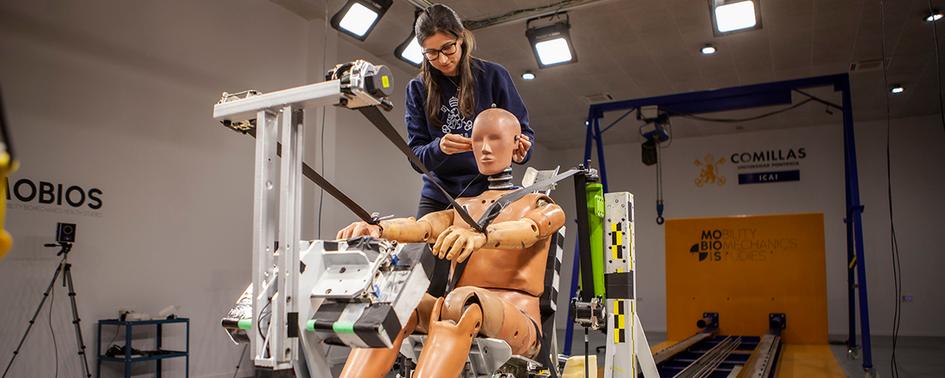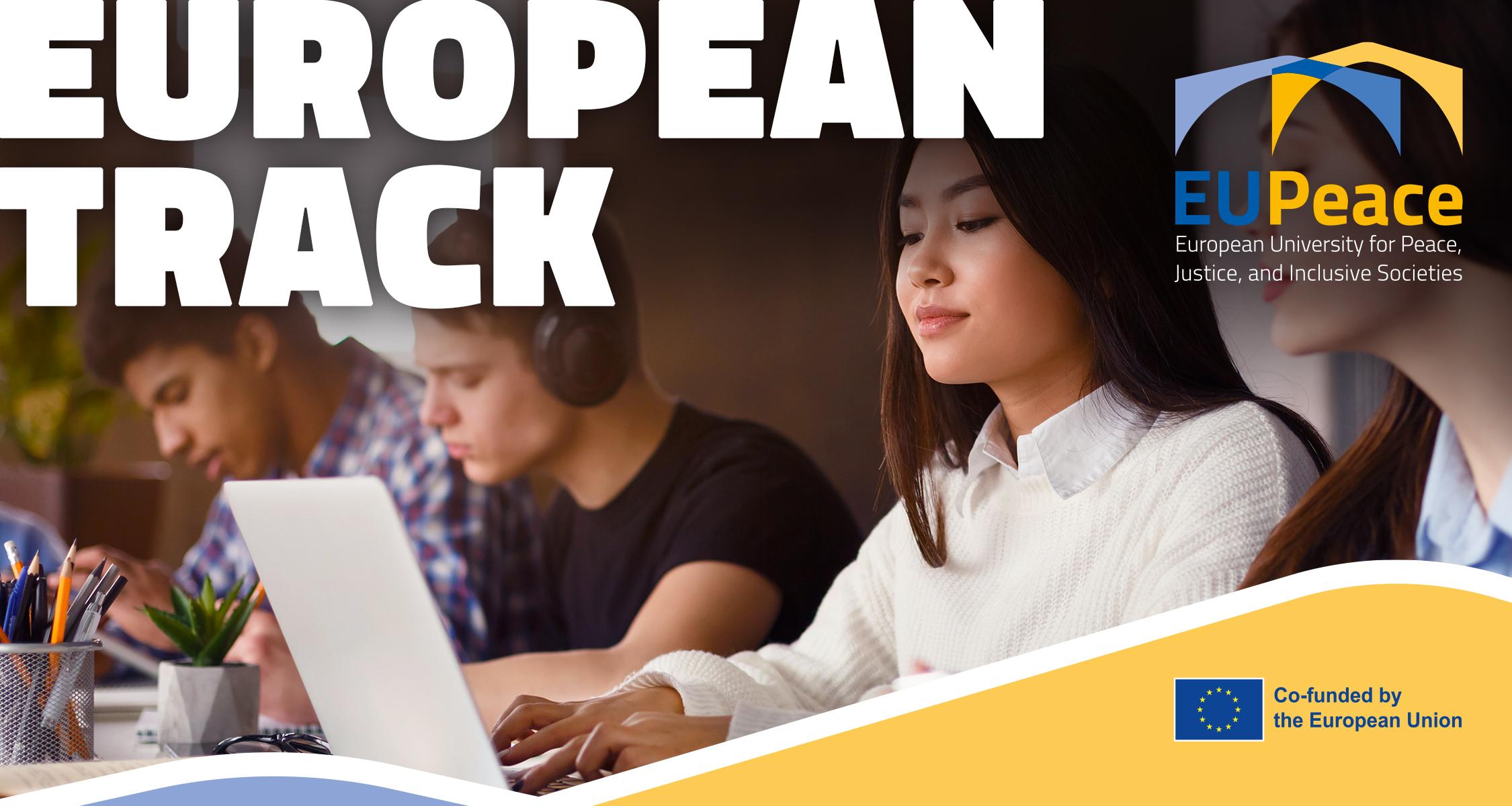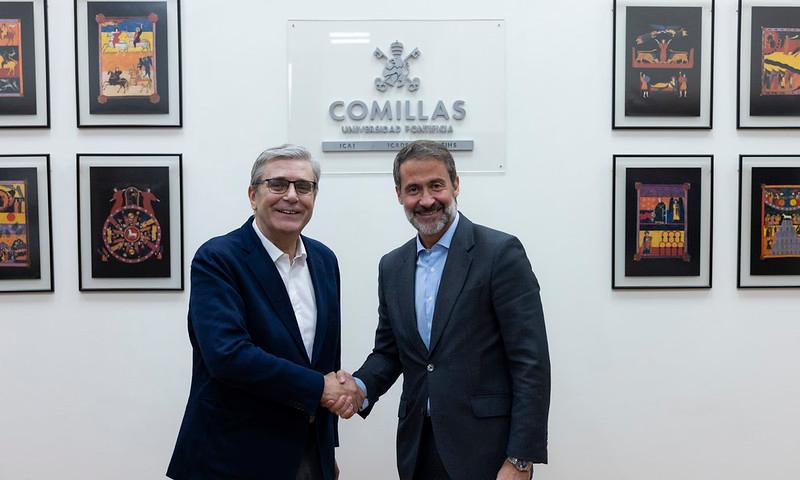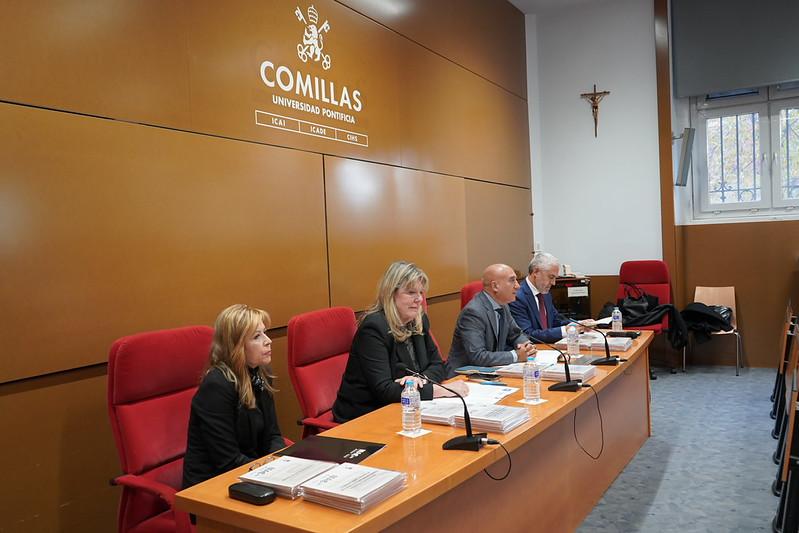Comillas Pontifical University inaugurates MOBIOS Lab, a unique laboratory in Europe
There will be research and training activities in some cutting-edge laboratories: the Anatomy and Biomechanics laboratory and the Microbiology and Cell Culture laboratory.

The injury biomechanics laboratory counts on a cutting-edge reverse catapult for impact testing
27 March 2023
Comillas has presented MOBIOS Lab (the Laboratory of Mobility, Biomechanics and Heath), a 2,500 square meters facility for applied research and knowledge transfer that aims to address new mobility scenarios for the future. Due to its design, it is a unique facility in Europe for research into the biomechanics of injuries, both in terms of equipment and scope of the projects that can be carried out in the medical, sports and mobility fields.
One of the laboratories at MOBIOS Lab, the injury biomechanics one, counts on a cutting-edge reverse catapult for impact testing. “For decades, mobility and transport have had the dubious honour of leading the world’s accident figures, which are scandalous in the least developed countries, despite notable efforts to promote policies and training plans to reduce mortality and the undeniable developments in passive and active safety in the automotive industry, one of the most important today”, highlighted Francisco López Valdés, director of MOBIOS Lab.
During the opening ceremony, which Javier Ubeda, mayor of Boadilla del Monte, attended, the rector of Comillas, Enrique Sanz, assured that "MOBIOS Lab embodies what Comillas is: research, transference and innovation, an international and collaborative university. With this project we want to help countries that need to develop competences and prevent deaths in traffic”.
Establishing synergies
MOBIOS Lab has been designed with an integrating perspective of the different branches of bioengineering that can establish synergies between mobility, biomechanics, biomedical engineering , biotechnology and health. For that, it counts with different spaces for the transfer of knowledge, computational and experimental research. As well as the injury biomechanics laboratory, it has a cell culture laboratory, an anatomy and biomechanics laboratory and a biomechanical trials laboratory. Here people will work with biological and biocompatible materials and perform tissue characterisation.
There will also be spaces for training, with the aim of introducing engineering professionals to biomedical applications through biochemical, biomechanical and biomedical practices, and health professionals to surgical practices in 3D printing and Virtual Reality.
Related news

Comillas, together with the other universities that are part of the EUPeace Alliance, is launching a new interdisciplinary certificate for its students: the European Track (EUT). This unique certificate brings together courses from all nine EUPeace universities — located in Germany, France, Spain, Italy, Czech Republic, Bosnia & Herzegovina, and Türkiye.
The European Track is designed for students who want to go beyond their own study program and explore today’s global challenges from an interdisciplinary and international perspective.

The agreement between the two entities strengthens their friendship and underlines their commitment to young talent at the university

The courses "Los números en la cocina" and "Innovación y Gestión Empresarial para el futuro en el sector gastronómico" conclude their first edition with students from the Agencia para el Empleo and the gastronomic sector
